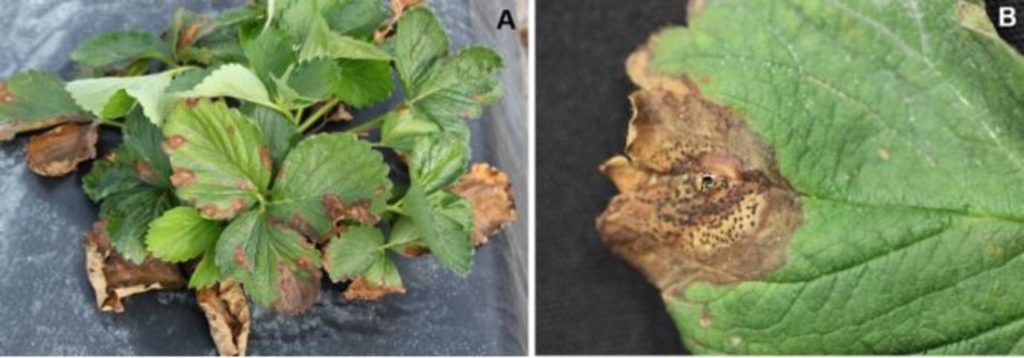
Credit: UF/IFAS GCREC
By Clint Thompson
Neopestalotiopsis Fruit Rot in Florida strawberries is inevitable this year, based on previous years of production. But because symptoms manifest themselves similarly to other diseases, growers need to make sure the disease is actually present in their fields before taking action.
Vance Whitaker, strawberry breeder at the University of Florida Gulf Coast Research and Education Center, encourages growers to send in samples to ensure that Neopestalotiopsis is present.
“The most important thing is to get the samples diagnosed at our Plant Disease Clinic here at the (University of Florida Institute of Food and Agricultural Sciences) Gulf Coast Research and Education Center with Dr. (Natalia) Peres’ lab. That’s super important because there’s a lot of leaf spots that look very similar and they can actually be difficult to diagnose,” Whitaker said. “We’ve gotten a lot of leaf samples where growers have said it looks like that disease, but it turns out not to be. There’s so many different things that can cause spots on leaves.”
Disease Symptoms
Neopestalotiopsis causes leaf spots on strawberry plants. It develops quickly and produces spores on the leaves. It can cause severe leaf spotting and fruit rot under favorable weather conditions.
The disease was discovered during the 2018-19 season in five farms and was attributed to one nursery source in North Carolina. More than 20 farms experienced the disease during the 2019-20 season. It was attributed to two nursery sources early in the season in North Carolina and Canada. It was discovered in 2020-21 in fields that had it the prior season.
Whitaker said the predicted dry weather this winter should help with disease management.
“We’ve got some (disease instances), as we’ve had the past couple of years. Nothing widespread yet,” Whitaker said. “I think as this weather stays drier moving forward, I think it’s a good outlook.
“The La Nina forecast is a very welcomed forecast in that regard for the winter.”
Warm and dry conditions accompany a La Nina weather pattern during the winter.









